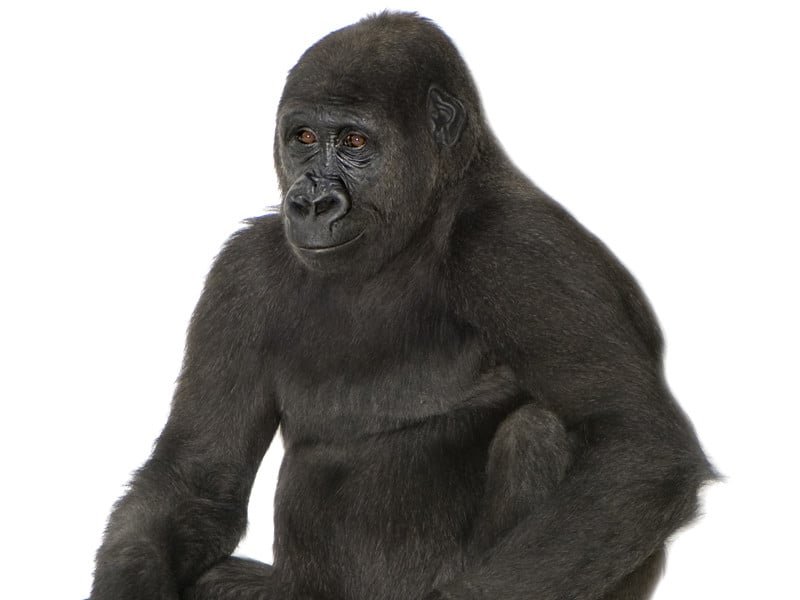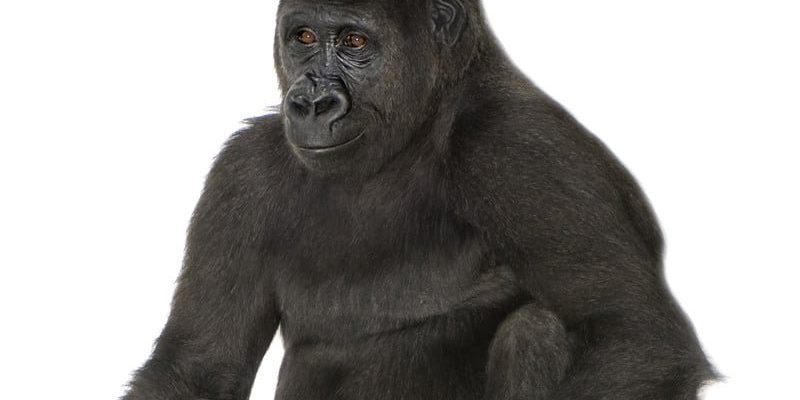
The Western Gorilla, scientifically known as *Gorilla gorilla*, is one of two species of gorillas. It’s a common misconception that great apes like gorillas have no history—they’re just here, right? But actually, they have a complex lineage that tells a tale of survival, adaptation, and remarkable resilience. Like a family tree with many branches, the history of these fantastic creatures reveals how they’ve evolved over time, learned to thrive in their environments, and how they relate to us humans.
Where It All Begins: The Primate Lineage
The story of the Western Gorilla starts long before they roamed the earth. To make sense of their evolution, let’s travel back to the last common ancestor of all primates. This ancestor existed roughly 60 million years ago. Imagine a small, tree-dwelling creature—the distant cousin of both monkeys and apes. Over millions of years, these small mammals evolved, adapted to various environments, and eventually gave rise to the primate family.
As time passed, some primates took to the trees, while others explored the ground. This divergence set the stage for the formation of different species, including the line that would become gorillas. By about 2 million years ago, the ancestors of modern gorillas had begun to emerge, adapting to the dense rainforests of Central Africa, where they would eventually thrive.
The Emergence of the Gorilla Lineage
Once our primate ancestors split into various branches, the gorilla lineage began to take shape. About 9 million years ago, the ancestors of gorillas and chimpanzees split from the ancestors of humans. It’s a bit like a great family reunion where one branch goes one way, and another branch heads in a different direction. The gorilla branch adapted to life in the dense forests, developing traits that would help them survive in this environment.
The Western Gorilla specifically diverged from other gorilla species, such as the Eastern Gorilla, around 2 million years ago. This split set the stage for the unique characteristics of the Western Gorilla. They evolved to be larger and more robust than their relatives, with strong arms and powerful bodies capable of navigating their forested homes.
Physical Characteristics and Adaptations
You might be wondering what sets the Western Gorilla apart from other species. For starters, their physical features are pretty striking. Adult males, known as silverbacks due to the silver hair on their backs, can weigh between 300 to 500 pounds and stand about 5 to 6 feet tall. Females are smaller, but still quite powerful.
These size differences aren’t just for show—they play a critical role in their survival. Strong muscles allow them to climb trees in search of food and evade potential threats. Their long arms help them swing through branches and navigate their dense habitats with ease. Moreover, their broad chests and sturdy jaws allow them to eat tough vegetation, which is a major part of their diet. Imagine munching on leaves and stems like a salad bar filled with all your favorite greens!
Lifestyle and Social Structure
The social structure of Western Gorillas is just as fascinating as their physical traits. They live in groups known as troops, typically led by a dominant silverback. This strong leader protects the group and plays the role of decision-maker. You could think of him as the protector of a small tribe, making sure everyone has enough food and is safe from harm.
Interestingly, gorilla troops can vary in size, often consisting of 5 to 30 individuals. The females usually remain within their family group for life, while males may leave to establish their own troop. This social dynamic is critical for maintaining genetic diversity within the population, allowing for better adaptability and survival in changing environments.
Conservation Status and Threats
Sadly, the story of the Western Gorilla isn’t just one of evolution and adaptation—it’s also about survival challenges. The conservation status of these magnificent creatures is alarming. They are classified as critically endangered due to habitat loss, poaching, and diseases like Ebola. Deforestation, driven by agriculture and logging, has led to significant loss of their habitat. Imagine being forced out of your home and into cramped spaces; that’s what these gorillas are facing.
Efforts to protect them include wildlife reserves and conservation programs focused on habitat restoration. Local communities are often involved in these initiatives, as their cooperation is vital for the success of conservation efforts. If we don’t act, we risk losing a significant piece of our biological heritage.
The Role of Western Gorillas in Ecosystems
Western Gorillas play an essential role in their ecosystems. As herbivores, they contribute to seed dispersal and help maintain the health of their forest habitat. When they eat fruits and leaves, they help spread the seeds through their dung, giving new plants a chance to grow. It’s like a natural gardening service, helping the forest thrive.
Their foraging also influences the structure of the forest. By eating certain plants, they keep some species from dominating, allowing a variety of plant life to flourish. This, in turn, supports other wildlife, creating a rich biodiversity that benefits the entire ecosystem.
The Future of the Western Gorilla
As we look to the future, the Western Gorilla stands at a crossroads. The actions we take now will determine their fate. Conservation efforts are more critical than ever, not just for the gorillas themselves, but for the ecosystems they inhabit and the lessons we learn from their resilience.
We all have a role to play, from advocating for conservation policies to supporting wildlife organizations. By working together, we can help ensure that the story of the Western Gorilla continues for generations to come.
In conclusion, the evolutionary history of the Western Gorilla is a rich tapestry of survival, adaptation, and connection. Understanding their past helps us recognize our shared heritage and responsibilities. These incredible creatures are not only a part of our planet’s history but also a vital piece of the living world today. Let’s do our part to protect them and their lush, leafy home.

